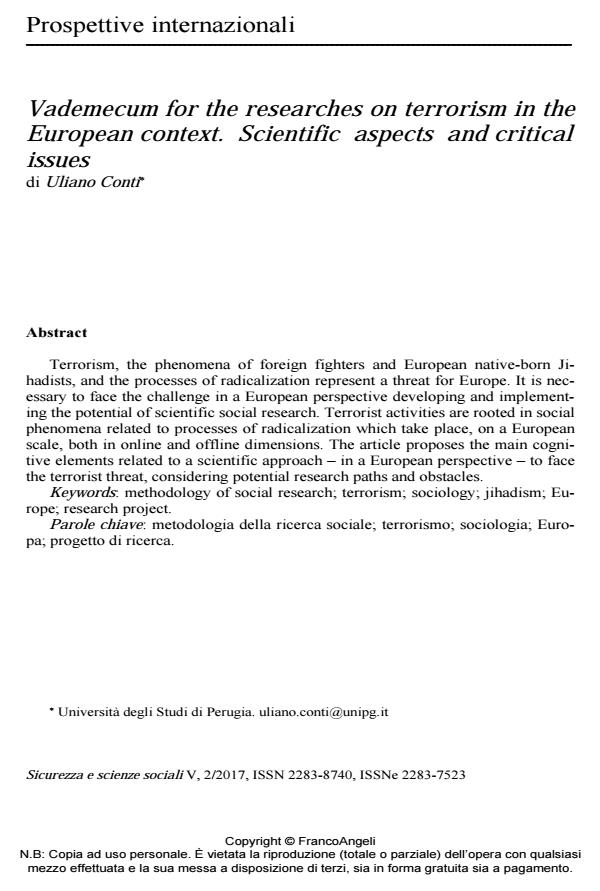Vademecum for the researches on terrorism in the European context. Scientific aspects and critical issues
Titolo Rivista SICUREZZA E SCIENZE SOCIALI
Autori/Curatori Uliano Conti
Anno di pubblicazione 2017 Fascicolo 2017/2
Lingua Italiano Numero pagine 16 P. 125-140 Dimensione file 176 KB
DOI 10.3280/SISS2017-002008
Il DOI è il codice a barre della proprietà intellettuale: per saperne di più
clicca qui
Qui sotto puoi vedere in anteprima la prima pagina di questo articolo.
Se questo articolo ti interessa, lo puoi acquistare (e scaricare in formato pdf) seguendo le facili indicazioni per acquistare il download credit. Acquista Download Credits per scaricare questo Articolo in formato PDF

FrancoAngeli è membro della Publishers International Linking Association, Inc (PILA)associazione indipendente e non profit per facilitare (attraverso i servizi tecnologici implementati da CrossRef.org) l’accesso degli studiosi ai contenuti digitali nelle pubblicazioni professionali e scientifiche
Terrorism, the phenomena of foreign fighters and European native-born Jihadists, and the processes of radicalization represent a threat for Europe. It is necessary to face the challenge in a European perspective developing and implement-ing the potential of scientific social research. Terrorist activities are rooted in social phenomena related to processes of radicalization which take place, on a European scale, both in online and offline dimensions. The article proposes the main cognitive elements related to a scientific approach - in a European perspective - to face the terrorist threat, considering potential research paths and obstacles.
Parole chiave:Metodologia della ricerca sociale; terrorismo; sociologia; Europa; progetto di ricerca.
Uliano Conti, Vademecum for the researches on terrorism in the European context. Scientific aspects and critical issues in "SICUREZZA E SCIENZE SOCIALI" 2/2017, pp 125-140, DOI: 10.3280/SISS2017-002008